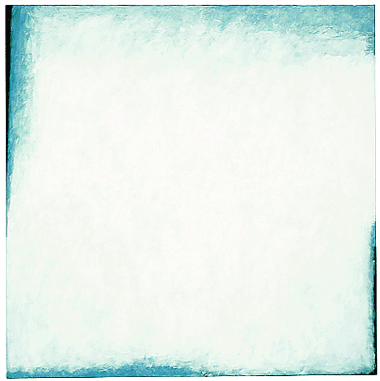Robert Ryman explores the gray matter tugging at its confinement
Robert Ryman uses a systematic approach that yields instinctual results. In an exhibition of recent works at Pace Wildenstein in Chelsea, the self-taught artist continues his long-term exploration of white paint, scale, support and composition. Ryman is now tackling integration, working ”to incorporate white and the dark ground as one”, according to the exhibition’s artist statement.
Oil on canvas works of varying sizes are juxtaposed in a beautiful installation. The paintings, completed in 2003 and 2004, range in scale from a ten-inch square to an eight-foot square. The application and distribution of the pigment are done in such a way that the sides of the canvases are utilized.
“I use the sides of the paintings compositionally since the paintings themselves are the subject,” explains Ryman.
The edge where white meets black plays a prominent role in each work. In the stage-like squares, the application and integration of surface and ground take shape with four varied whites atop the matte background. The white can be thin or thick, smooth or lumpy, blended or turbulent, each of these choices evoking a different mood. All the paintings convey a feeling of contained calm.
In “Series #9 (White)” (2004), the upper left and lower right pull toward each other with a kind of magnetic attraction, evoking a stormy feeling. In “Series #22 (White)” (2004), a turbulent mid-tone gray center moves away from the sharp, white left edge and is contained by the dark lower right corner.
One of the most effective devices employed in the larger canvases has them floating away from the wall, allowing them to hover. A mid-tone gray shadow relates to the transitional grays of the paintings, an effect that aids in the merger of the wall and picture planes, ultimately unifying the space itself. Less successful are the three-inch wide edged smaller canvases that protrude from the wall, feeling a bit abrupt and object-like.
“Series #3 (White),” one of the largest works, is subtle and engaging, surrounded by a thin sliver of black. Smooth, cream-colored strokes undulate across the canvas making the painting expansive; it surrounds and engulfs much like a Barnett Newman. “Series #6 (White),” also from 2003, a 53-inch square, looks as if one white was applied from one direction and another shade was applied from another, creating an active and energized surface with the dark ground skillfully merged––subsumed but present.
Ryman’s strong and accomplished pairings and his propensity for exploration are impressive and formidable. Avoiding artifice, this exhibition shows Ryman challenging himself with new parameters. The artist is not afraid to approach the edge, his inquiry reduced, but not distanced and ultimately human. The viewer with time to spare is truly rewarded. One wishes all integration would be pursued so fearlessly.



































